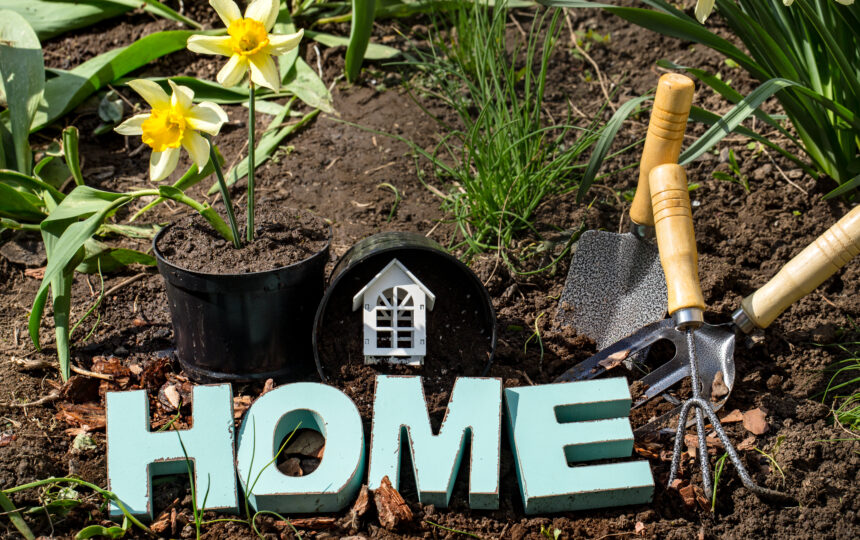Landscaping and gardens are an essential part of many homes, providing beauty, relaxation, and a connection to nature. However, they are vulnerable to various risks such as storms, vandalism, accidents, and natural disasters. Home insurance plays a crucial role in protecting your landscaping and garden investments. Here’s a closer look at the role of home insurance in covering landscaping and garden damage:
- Dwelling Coverage: Most standard home insurance policies provide coverage for the dwelling, which includes the physical structure of your home. This coverage extends to other structures on your property, including landscaping elements such as fences, retaining walls, and patios. If these structures are damaged due to covered perils like fire, windstorms, or vandalism, your dwelling coverage can help cover the repair or replacement costs.
- Personal Property Coverage: While personal property coverage typically focuses on items inside your home, it may also extend to certain belongings outside, such as garden furniture, tools, or equipment. If these items are stolen, damaged, or destroyed due to covered perils, your home insurance may provide reimbursement up to the limits stated in your policy. However, be aware that certain limitations or exclusions may apply, so it’s essential to review your policy carefully.
- Landscaping and Garden Coverage: Many home insurance policies offer limited coverage for landscaping and gardens, typically referred to as “other structures coverage.” This coverage usually applies to features like trees, plants, shrubs, and flower beds. If these elements are damaged by a covered peril, such as a fire or lightning strike, your insurance policy may provide reimbursement for their replacement or restoration. However, keep in mind that there are usually sub-limits on the amount of coverage provided for landscaping, typically ranging from 5% to 10% of the dwelling coverage limit.
- Coverage Limitations: It’s important to understand the limitations and exclusions of your home insurance policy regarding landscaping and garden damage. Common exclusions include damage caused by normal wear and tear, disease or pests, or certain weather-related events like flooding. Additionally, coverage for high-value plants or rare specimens may require additional endorsements or a separate policy. Review your policy carefully and consult with your insurance provider to ensure you have a clear understanding of the coverage limitations and any necessary adjustments.
- Additional Coverage Options: Depending on the value and extent of your landscaping and garden investments, you may want to consider additional coverage options. Some insurance companies offer endorsements or riders specifically designed to enhance coverage for landscaping and gardens. These options can provide increased limits, coverage for specific perils, or even coverage for professional landscape design services. Discuss these options with your insurance provider to determine if they are suitable for your needs.
- Regular Maintenance and Preventive Measures: Maintaining your landscaping and gardens is not only crucial for their beauty but also for insurance purposes. Regular maintenance, such as trimming trees and shrubs, removing dead branches, and keeping the area well-maintained, can help prevent damage and minimize risks. Insurance companies may require evidence of proper maintenance, especially for high-risk elements like large trees. Failure to maintain your landscaping and gardens adequately may result in coverage limitations or exclusions in the event of a claim.
- Documenting Your Landscaping and Garden: To facilitate the claims process, it’s important to document your landscaping and garden investments. Take photographs or videos of the landscape, including individual plants, trees, and any unique features. Keep records of receipts, invoices, or appraisals for high-value plants or landscaping improvements. This documentation can help substantiate your claims and ensure a smoother settlement process.
In conclusion, home insurance plays a vital role in covering landscaping and garden damage. Dwelling coverage can extend to structures like fences and patios, while personal property coverage may protect certain outdoor items. Home insurance policies may also offer limited coverage for landscaping elements, although sub-limits often apply. It’s essential to review your policy, understand its limitations, and consider additional coverage options if necessary. Regular maintenance and documentation of your landscaping and garden investments are also crucial for maximizing insurance coverage and facilitating the claims process. Consult with your insurance provider to ensure you have adequate coverage for your landscaping and garden assets.










